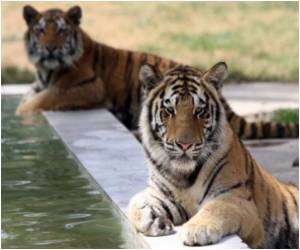A Michigan State University doctoral student says that to protect a dangerous and endangered animal, it is essential to know how people feel about their wildlife neighbors.

Effective conservation calls for not only figuring out what protected species need - like habitat and food sources. It also requires an understanding of what it takes for their human neighbours to tolerate them.
"People have complex psychological relationships with wildlife. Picking apart these complex relationships is the best way to get a really good idea of what's affecting their tolerance of the animal," said Carter.
Carter has conducted research in Nepal's Chitwan National Park, home to some 125 adult tigers that live close to people. And tigers, like all wild animals, have little regard for borders or fences.
Likewise, the tigers' human neighbours depend on the forests for their livelihoods. Conflict is inevitable. There were 65 human deaths due to tiger attacks from 1998 to 2006 and tigers are known to kill livestock. People sometimes kill tigers in response to these threats
Carter's work has developed a novel tool to help figure out where to direct conservation resources-not just in Nepal, but also for conserving carnivores that live next to people in many regions of the world.
Advertisement
"You can't just remove all the tigers, or the grizzly bears, or other carnivores that may pose a risk to people. Managing animal populations in this fashion is not a viable option for protected species. It's imperative to come up with ways that people and carnivores can get along," Carter said.
Advertisement
The study has been published in Oryx, an international journal of conservation.
Source-ANI










